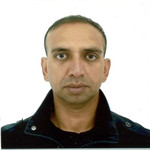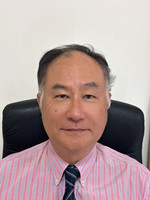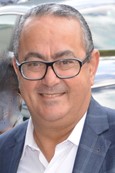Dr. Kien Wen Sun was born in Taipei,
Taiwan. He holds a Ph.D. from the
Department of Electrical Engineering at
Princeton University in New Jersey,
United States. From 1995-2000, he was on
the faculty of the Electronic
Engineering at Feng Chia University,
Taiwan. He jointed the faculty of
Department of Physics as a professor at
National Dong Hwa University, Hualien,
Taiwan, from 2000-2005. Since year 2005,
he became a professor of Department of
Applied Chemistry at National Yang Ming
Chiao Tung University (formerly known as
National Chiao Tung University), Hsinchu,
Taiwan. During his sabbatical in 2012,
he was a visiting professor at
Department of Electrical and Computer
Engineering of University of Waterloo,
Canada. Dr. Sun was appointed as the
Department Chair of Applied Chemistry at
NCTU from 2012-2014. He was also a Joint
Appointment Professor at Department of
Electronics Engineering and Director of
the Center of Nano Science and
Technology at National Chiao Tung
University from 2016-2019. His research
interests include femtosecond laser and
laser spectroscopy in III-V compound
semiconductors, spintronics, nanoimprint,
nanolithography, nanoelectronics,
organic/inorganic solar cells, diamond
related nanomaterials, perovskites and
perovskite LEDs, and chemosensors. He
has published more than 150 SCI journal
papers in above research fields. He is a
member of Phi Tau Phi Scholastic Honor
Society and Fellow of Hong Kong
Chemical, Biological & Environmental
Engineering Society (HKCBEES). He was
given the Rudolph A. Marcus Award by
Publishing Division of Cognizure and
LOGNOR in 2017 and Taiwan Future Tech
Award on 2020. He has served as
reviewers for numerous high impact
international journals, such as Nature
Communications, Advanced Functional
Materials, Progress in Photovoltaics,
Nanoscale Horizons, etc. He served as
Guest Editors of several Special Issues
in Chemosensors and Talanta Open and is
currently a Topic Editor of Chemosensors.
|





